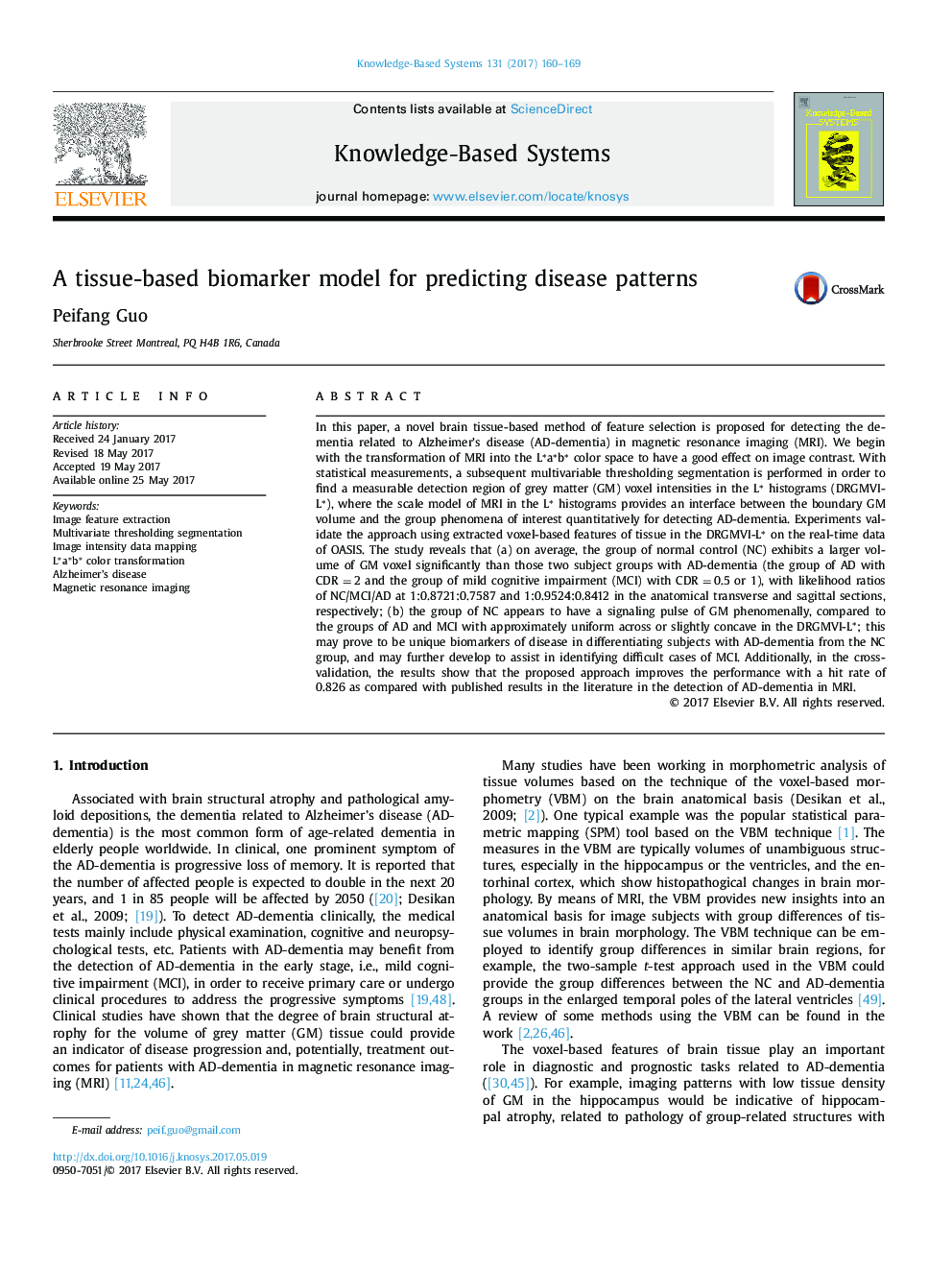| Article ID | Journal | Published Year | Pages | File Type |
|---|---|---|---|---|
| 4946092 | Knowledge-Based Systems | 2017 | 10 Pages |
Abstract
In this paper, a novel brain tissue-based method of feature selection is proposed for detecting the dementia related to Alzheimer's disease (AD-dementia) in magnetic resonance imaging (MRI). We begin with the transformation of MRI into the L*a*b* color space to have a good effect on image contrast. With statistical measurements, a subsequent multivariable thresholding segmentation is performed in order to find a measurable detection region of grey matter (GM) voxel intensities in the L* histograms (DRGMVI-L*), where the scale model of MRI in the L* histograms provides an interface between the boundary GM volume and the group phenomena of interest quantitatively for detecting AD-dementia. Experiments validate the approach using extracted voxel-based features of tissue in the DRGMVI-L* on the real-time data of OASIS. The study reveals that (a) on average, the group of normal control (NC) exhibits a larger volume of GM voxel significantly than those two subject groups with AD-dementia (the group of AD with CDR =â2 and the group of mild cognitive impairment (MCI) with CDR =â0.5 or 1), with likelihood ratios of NC/MCI/AD at 1:0.8721:0.7587 and 1:0.9524:0.8412 in the anatomical transverse and sagittal sections, respectively; (b) the group of NC appears to have a signaling pulse of GM phenomenally, compared to the groups of AD and MCI with approximately uniform across or slightly concave in the DRGMVI-L*; this may prove to be unique biomarkers of disease in differentiating subjects with AD-dementia from the NC group, and may further develop to assist in identifying difficult cases of MCI. Additionally, in the cross-validation, the results show that the proposed approach improves the performance with a hit rate of 0.826 as compared with published results in the literature in the detection of AD-dementia in MRI.
Related Topics
Physical Sciences and Engineering
Computer Science
Artificial Intelligence
Authors
Peifang Guo,
